Comparative Composer Premieres
Welcome…
How to Use
Each composer corresponds to a specific dot color. Arthur Honegger is dark blue, Francis Poulenc is green, Igor Stravinsky is light blue, and Darius Milhaud is purple. Click on bookmarks to zoom quickly to Paris, Europe, or the World. Click on specific points for more information on each premiere.
Comparative Composer Premiere Map
What Does This Map Say?
Mapping the premieres of works by these four composers, several trends and subsequent research questions emerge:
1.) Paris held the monopoly on premieres of works by these four composers. About 72% of these premieres (138/221) were held in Paris. This seems to support the idea of Paris as cultural capital of Europe in the early 20th century, but what factors made it possible for so many premieres to take place here?
2.) Stravinsky was the only composer out of the four who had a majority of his works premiered outside of Paris -about 46% of Stravinsky’s works were premiered in Paris, compared to Milhaud’s 64%, Honegger’s 70%, and Poulenc’s 84%. Why were many of Stravinsky’s works premiered outside of Paris? To what extent does this have to do with the nationality of each composer? Why were Milhaud’s works premiered more outside of France than those of Honegger and Poulenc?
3.) The vast majority of premieres were held in public theaters and concert halls (rather than churches or private residences). What does this say about the role of music in social life in early 20th century Europe? To what extent does the kind of venue inform the style/genre of music that is performed there, and vice versa?
4.) The vast majority of premieres were held in Europe, except for a couple along the East coast of the U.S. and one in Rio de Janeiro. What connections did these composers have that made it possible for their works to be premiered outside of Europe? How and why did one of Milhaud’s works get premiered in Rio?
5.) In France, the vast majority of premieres were concentrated in Paris, while in Germany, premieres were spread out over several cities. Why is this? What does this say about the sociopolitical systems and the distribution and flow of power in each country?
Faceted Map of Composer Premieres
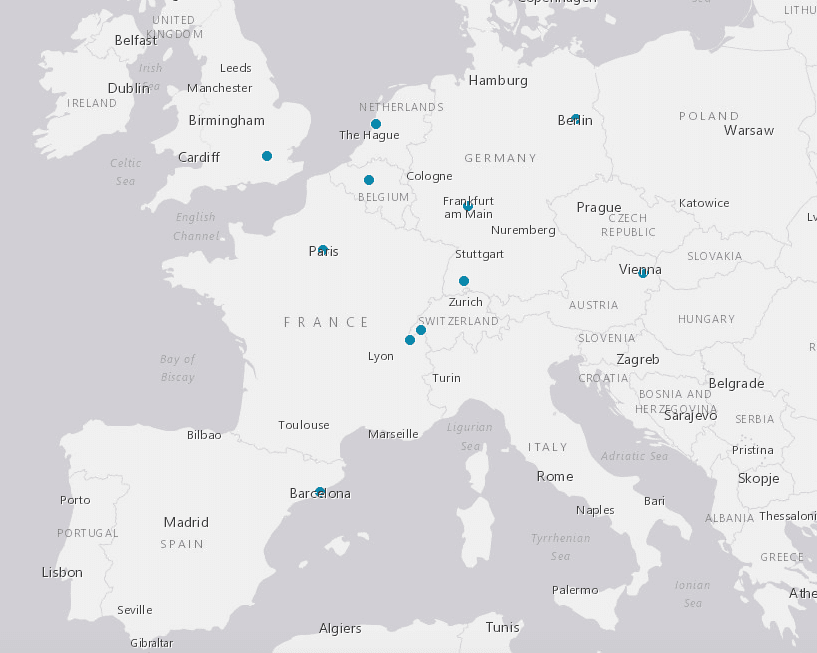
Stravinsky’s Premieres 1910-1933
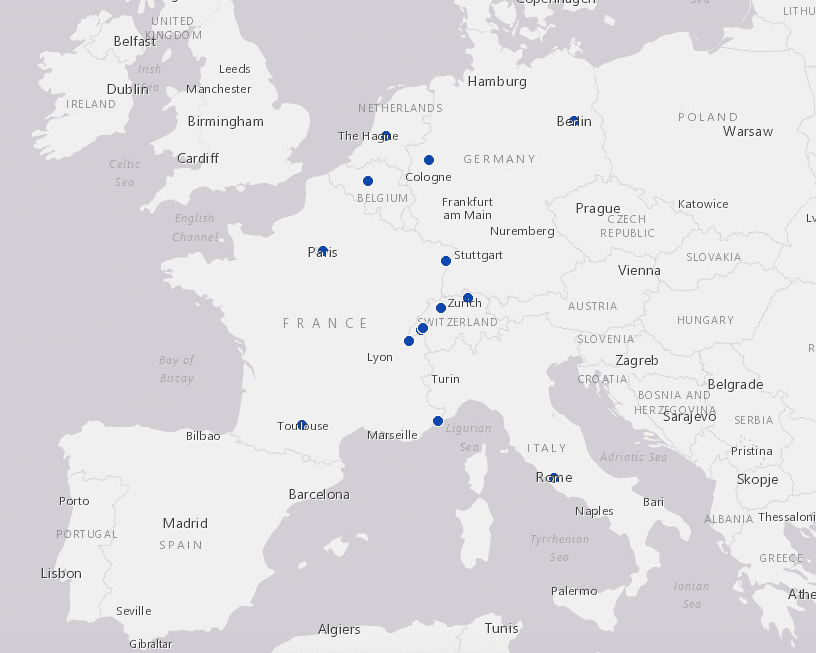
Honegger’s Premieres 1910-1933
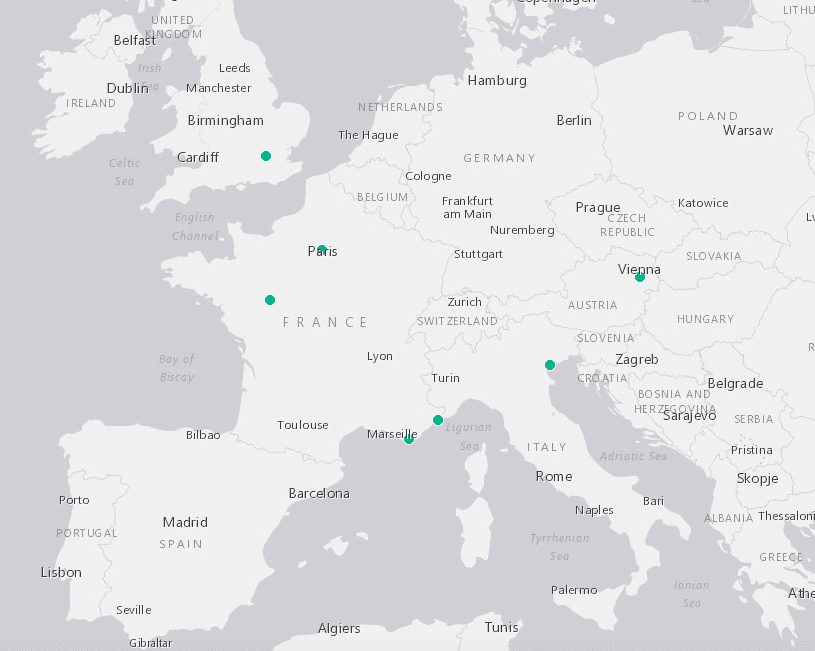
Poulenc’s Premieres 1910-1933
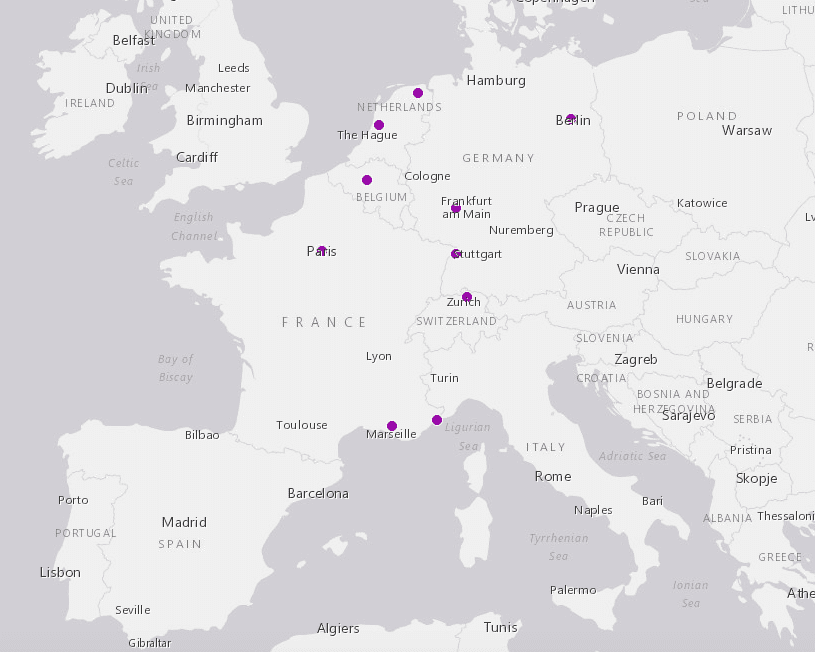
Milhaud’s Premieres 1910-1933
What Does This Map Say?
Why this map?
Our focus for the summer of 2017 is the music of composer Darius Milhaud. We are interested in why so much of his music was performed in Germany, especially considering the conflict between the two countries. A comparative map including Milhaud and several of his contemporaries can give us a better idea of how he stood out in the twentieth century. As is the case with most maps that we have made, this is largely exploratory, and most likely will not yet lead us to any concrete conclusions about Milhaud. However, it can lead us to new and exciting research questions.
This map also serves a pedagogical purpose. It helped us as a research team to develop map-making skills using ArcGis software. Additionally, it is a good example of what musicological research looks like on a map, and allows for experimentation with operating interactive maps like this. Feel free to explore with bookmarks, pop-ups, and more on our map!
Research Methods
For the past two summers, the Musical Geography Project CURI Team has been working to compile the data related to the premieres of Arthur Honegger, Francis Poulenc, Darius Milhaud, and Igor Stravinsky. This summer we finished compiling the data for the premieres of these composers’ music through the year 1933. To accomplish this, we primarily use two methods:
- Using secondary sources as a starting place, we collected as much information as possible relating to the premiere date, venue, address, latitude and longitude, and more for pieces by each composer.
- What we could not locate in secondary sources, we confirmed in primary sources including historical periodicals, newspapers, and autobiographies. For a complete list of our sources, please see the bibliography at the bottom of the page.
After compiling all of our data into a spreadsheet, we loaded the information into Arc GIS, creating a unique layer for each composer’s information.
Periodicals and Newspapers
Le Figaro
Le Ménestrel
New York Times
Bibliography
Halbreich, Harry. Arthur Honneger. Translated by Roger Nichols. Portland: Amadeus Press, 1999.
Milhaud, Madeleine. Catalogue des œuvres de Darius Milhaud. Paris: Slatkine, 1982.
Milhaud, Darius. My happy life. Translated by Donald Evans, Christopher Palmer, and George Hall. London: Marion Boyars, 1995.
Nichols, Roger. Conversations with Madeleine Milhaud. London: Faber and Faber, 1996.
Poulenc, Francis. Correspondance, 1910-1963. Edited by Myriam Chimènes. Paris: Fayard, 1994.
Walsh, Stephen. “Stravinsky, Igor.” Grove Music Online. Oxford Music Online. Oxford University Press, accessed June 16, 2017, http://www.oxfordmusiconline.com/subscriber/article/grove/music/52818.
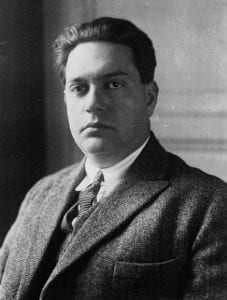
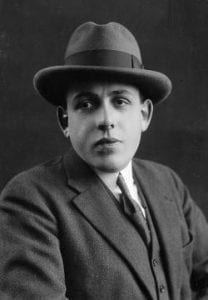
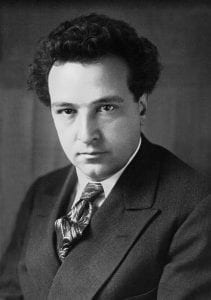
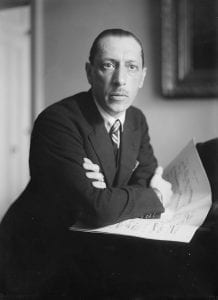




You must be logged in to post a comment.